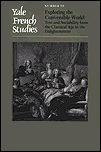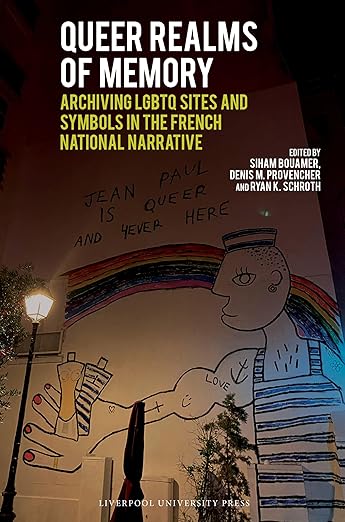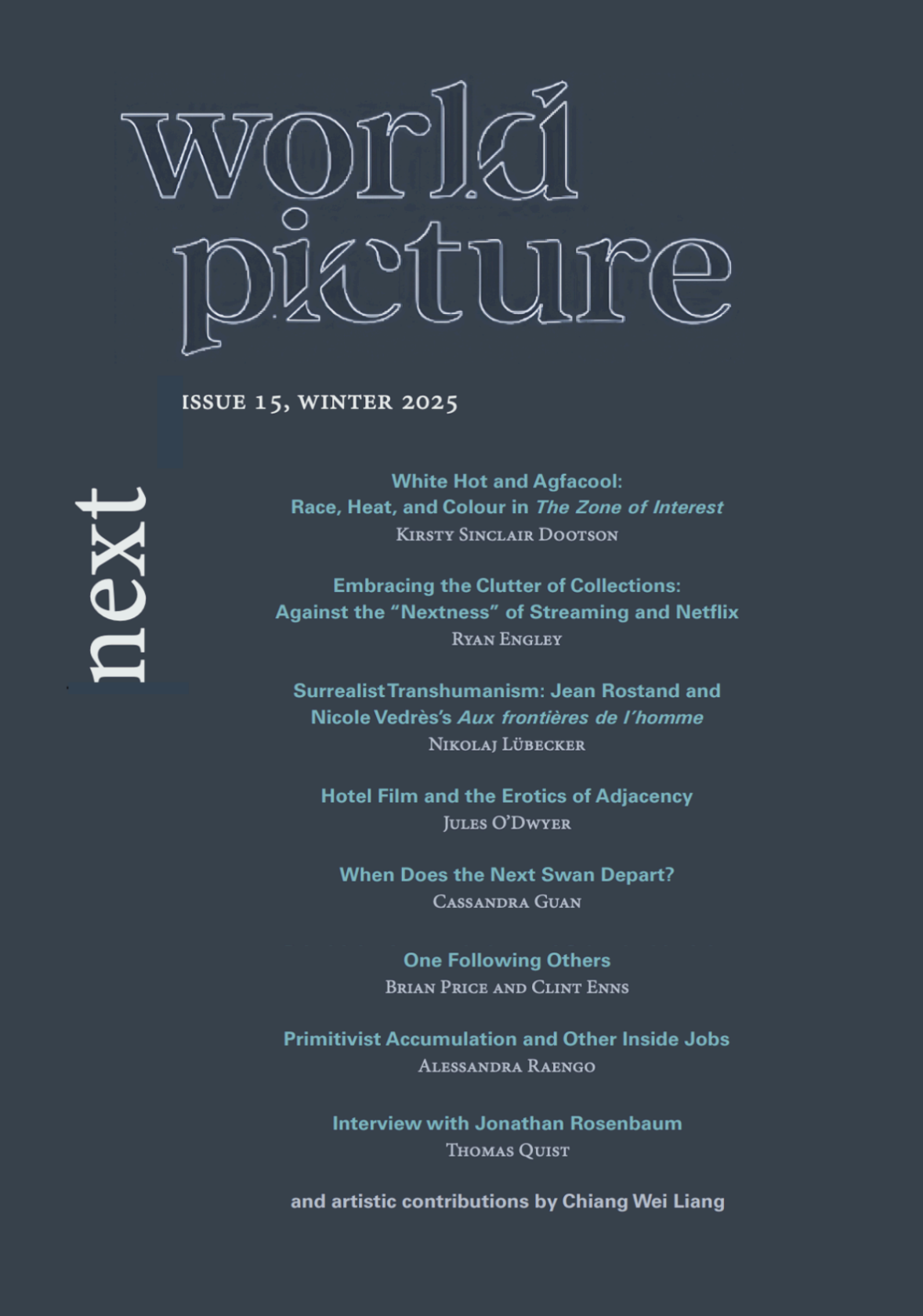Research
Books
The Seduction of Space: Cruising French Cinema

Published by University of Minnesota Press, 2025
Spatiality has long been a crucial and potent lens for understanding French culture and aesthetics. While canonical filmmakers like Jean-Luc Godard, Agnès Varda, and Louis Malle invoked the notion of flânerie to explore ideas of modernism, spatial exploration, and urban sociality, this book demonstrates how a more recent generation of French queer filmmakers continue to engage with—and contest-this spatial legacy by focusing their attention on the cognate practice of cruising. Through the work of Jacques Nolot, Sébastien Lifshitz, Christophe Honoré, Vincent Dieutre, Alain Guiraudie, and others, The Seduction of Space draws film theory, queer studies, and spatial inquiry into close proximity to examine the politics of cruising and the gendering of space. Making the case that cinema not only documents the queer spaces of the past but continues to produce them, the book maps the relationships between sex and spatiality by taking up such varied topics as public sex in the porn theater, racial eroticization in the banlieue, the ecocritical valences of rural cruising, and the geopolitics of sexuality in an expanded Francophone frame. Foregrounding the crucial role that spatiality plays in shaping the parameters of France’s visual cultures and political imaginary, this study represents both an urgent queer reconceptualization of this tradition and a clarion call for film scholars to tarry with the politics of sexuality in all its messiness. An exercise in reading queer cinematic space, The Seduction of Space makes conceptual interventions that resonate far beyond the book’s immediate national context.
Praise:
“The Seduction of Space is brilliantly conceived and fills a clear gap in the field of queer French film studies, namely the priority of sexuality and its links to questions of space and spatiality, relationality, and queer visual cultures more broadly. Stylishly and intelligently written, energetically argued, and eminently readable, this is sophisticated critical work of the highest order and an invaluable contribution to queer film theory and queer critical studies.” — David A. Gerstner, City University of New York
“Recalling and twisting to perverse effect the title of Henri Lefebvre’s landmark work on the production of space, Jules O’Dwyer’s magnificent The Seduction of Space explores the role of queer sexual desire in the production of spatial relations. O’Dwyer engages intimately with French queer film culture to produce a pioneering book that interweaves French cinema, film theory, queer studies, and spatial thought.” — Sarah Cooper, King’s College London
Hotels

Published by Fordham University Press, 2025
Second volume in Cutaways Series, eds. Erika Balsom and Genevieve Yue
From the Chateau Marmont to Marienbad, and from the Bates Motel to the Overlook Hotel, the hotels we encounter in the cinema often serve as much more than the mute backdrop against which a film’s action transpires. Rather, hotel spaces actively scaffold the formal, aesthetic, and narrative possibilities of cinema. My current book project considers the parallels between cinema and the hotel–two ‘hyperaesthetic’ spaces that appeal to experiential logics of fantasy, immersion, and aspiration; spaces that mediate our encounters with cultural difference and the world outside. This book reads the hotel as a privileged site for exploring the dynamics and contradictions that structure the modern condition: they are simultaneously public and private, spaces of leisure and labor. Hotel spaces mediate the spatiotemporal registers of the local and the global, historicity and anachronism. Hotels grounds readings of individual films within broader histories of moving image media. Drawing on a purposefully broad array of cinematic texts—from work by Lila Avilés to Liliana Cavani, and from Andy Warhol to Apichatpong Weerasethakul—I consider both how and why the institution of the hotel holds such a strong purchase on the cinematic imaginary.
Praise:
“Hotels ingeniously charts the trajectories of sight and site in the cinematic hotel, that place where the illicit transpires and fantasies are projected. From early silent shorts to the Chelsea Hotel, from Claire Denis to Atom Egoyan to Chantal Akerman, O’Dwyer shows how films and hotels have mutually constituted one another across a shared history. This slim volume offers a new way to imagine both cinema and its spaces.” - B. Ruby Rich, author of New Queer Cinema: The Director’s Cut
Selected Publications
-
 [forthcoming] Langue de Bois: The Queer Bois de Boulogne from Proust to TersenYale French Studies, 147, (2026), pp. .
[forthcoming] Langue de Bois: The Queer Bois de Boulogne from Proust to TersenYale French Studies, 147, (2026), pp. .
-
 Le Lieu de drague comme lieu de mémoire; Or, Cruising, Cinema, and Colonial Vestiges,In Queer Realms of Memory: Archiving LGBTQ Identities in the French National Narrative, eds. Siham Bouamer, Denis M. Provencher and Schroth, Ryan (Liverpool: Liverpool University Press), (2025), pp. 252–263.
Le Lieu de drague comme lieu de mémoire; Or, Cruising, Cinema, and Colonial Vestiges,In Queer Realms of Memory: Archiving LGBTQ Identities in the French National Narrative, eds. Siham Bouamer, Denis M. Provencher and Schroth, Ryan (Liverpool: Liverpool University Press), (2025), pp. 252–263. -
 Hotel Film and the Erotics of AdjacencyWorld Picture, 15, (2025), pp. 29–47.
Hotel Film and the Erotics of AdjacencyWorld Picture, 15, (2025), pp. 29–47.
-
 From the Story of an Eye to Corporeal CinemaIn The Routledge Companion to Gender and Affect, eds. Reeser, Todd (London; New York: Routledge), (2022), pp. 237–246.
From the Story of an Eye to Corporeal CinemaIn The Routledge Companion to Gender and Affect, eds. Reeser, Todd (London; New York: Routledge), (2022), pp. 237–246.
-
 Enduring extremity: on Isabelle Huppert’s intertextual bodyIn Isabelle Huppert: Stardom, Performance, Authorship, eds. Rees-Roberts, Nick and Waldron, Darren (London; New York: Bloomsbury), (2021), pp. 79–98.
Enduring extremity: on Isabelle Huppert’s intertextual bodyIn Isabelle Huppert: Stardom, Performance, Authorship, eds. Rees-Roberts, Nick and Waldron, Darren (London; New York: Bloomsbury), (2021), pp. 79–98.
-
 Coming and Going: Nolot, Barthes, and the Porn TheaterDiscourse, 42 (3), (2020), pp. 259–280.
Coming and Going: Nolot, Barthes, and the Porn TheaterDiscourse, 42 (3), (2020), pp. 259–280.
-
 Reframing the spaces of French cinemaStudies in French Cinema, 19 (2), (2019), pp. 165—169.
Reframing the spaces of French cinemaStudies in French Cinema, 19 (2), (2019), pp. 165—169. -
 The cinematic Rorschach: on signs and stains in Michaux and BrakhageIn Stains | Les Taches: Communication and Contamination in French Culture, eds. Gutt, Blake and Angelis, Zoe (Oxford: Peter Lang), (2019), pp. 69–84.
The cinematic Rorschach: on signs and stains in Michaux and BrakhageIn Stains | Les Taches: Communication and Contamination in French Culture, eds. Gutt, Blake and Angelis, Zoe (Oxford: Peter Lang), (2019), pp. 69–84.
-
 Histoire(s) de l’art: the queer curation of Vincent DieutreAlphaville, 16, (2018), pp. 53–66.
Histoire(s) de l’art: the queer curation of Vincent DieutreAlphaville, 16, (2018), pp. 53–66.
-
 Reorienting objects in Marker and Resnais’s Les Statues meurent aussiScreen, 58 (4), (2017), pp. 497–507.
Reorienting objects in Marker and Resnais’s Les Statues meurent aussiScreen, 58 (4), (2017), pp. 497–507.